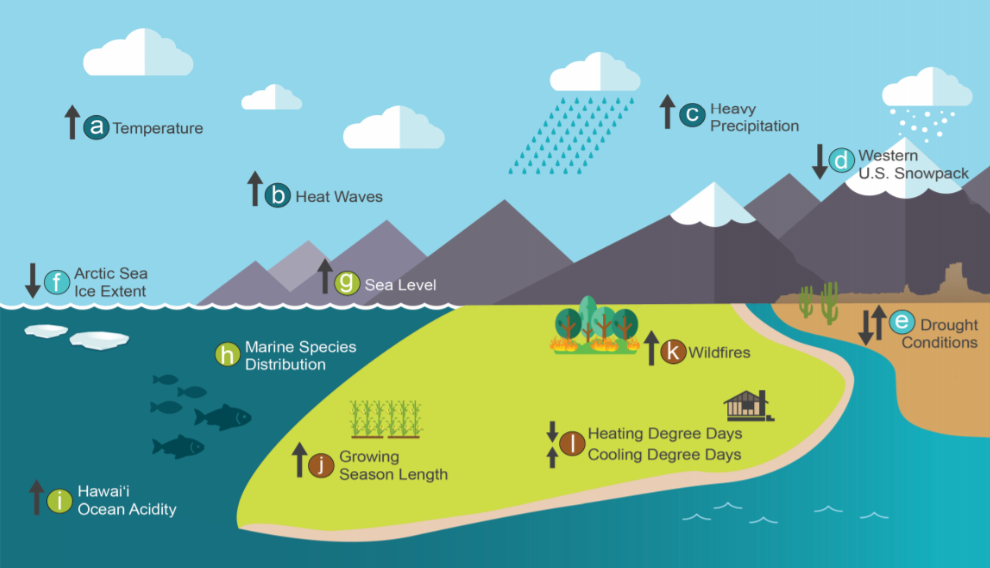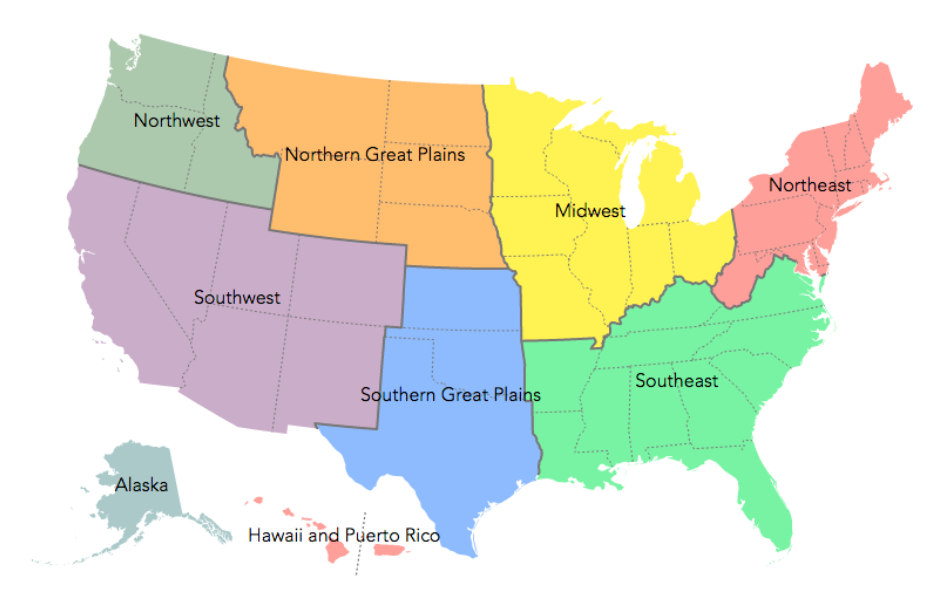Debunking Climate Change: Evidence Across the U.S.
Written by Alicia Tam
What is climate change?
Climate change is caused by the increase in greenhouse gases that warm the Earth’s atmosphere and are largely due to the increase in human activity during the past centuries. Some may argue that climate change is natural and that nothing can be done about it. Climate does change naturally but it has taken tens of thousands of years, whereas human activity has expedited the process in mere decades. Therefore, stopping greenhouse gas emissions is important to prevent us from the worst impacts of climate change.
“Isn’t the climate always changing? Yesterday was hot but today is cold.”
People tend to mistake “climate” with “weather”. According to NASA, “‘Weather’ refers to the more local changes in the climate we see around us, on short timescales from minutes to hours to days to weeks,” whereas “‘climate’ refers to longer-term averages (they may be regional or global), and can be thought of as the weather averaged over several seasons, years or decades.” For example, the weather can easily fluctuate from sunny in the morning to cloudy in the afternoon to thunderstorms in the evening. Other examples include rain, snow, winds, heat waves, and floods. Climate pertains to the changes in overall weather conditions. Climate change can be recognized when usual weather patterns become more extreme. This means places that are generally hot will reach higher temperatures and have more heat waves, which can be seen with an increase in California wildfires due to rising temperatures and dry conditions.
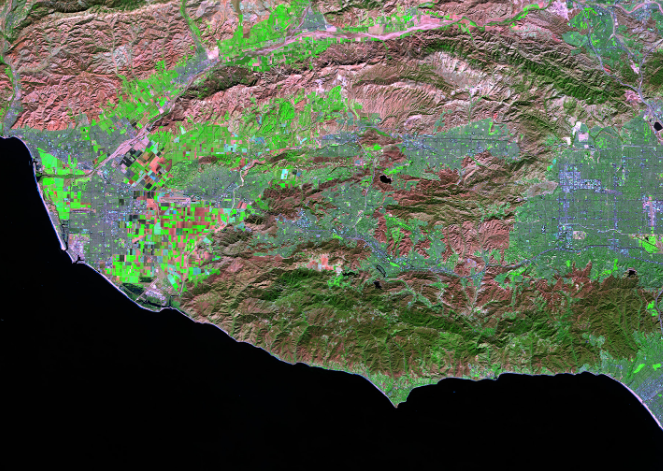
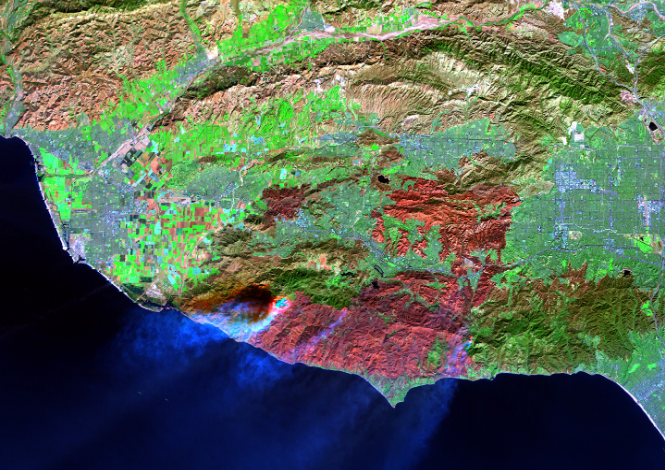
Photo: NASA; Wolsey Fire, Southern California (Nov. 3 - 11, 2018)
Climate Change in the U.S.
Climate change is already happening across the nation and is expected to intensify in the future. According to the U.S. Global Change Research Program (USGCRP), climate change indicators include arctic sea ice extent, sea levels, ocean acidity, temperature, heat waves, wildfires, drought conditions, heating and cooling degree days, heavy precipitation, and snowpack. These climate change indicators vary depending on the region.
Photo: U.S. Global Change Research Program (USGCRP) 2018; Climate Change Indicators
West Coast
On the west coast, the number of wildfires have increased, threatening communities, people’s lives, infrastructure, and property. These wildfires have a widespread effect, as the smoke spreads and affects human health and wildlife. In November 2018, the smoke from Northern California wildfires spread to the San Francisco Bay Area, causing the air quality index to be similar to and, in some places, worse than the air quality in Beijing, China. The toxic chemicals, gases, and fine particles can heavily affect those with heart or lung conditions.
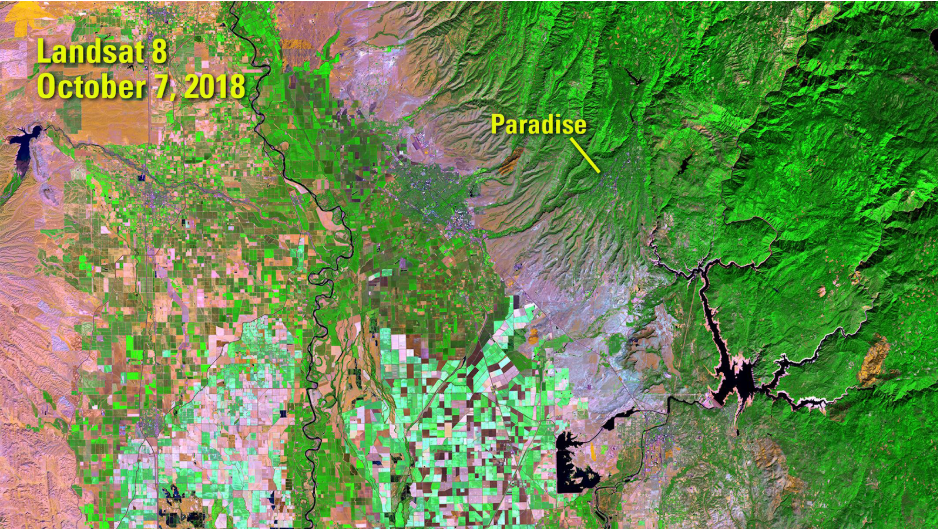
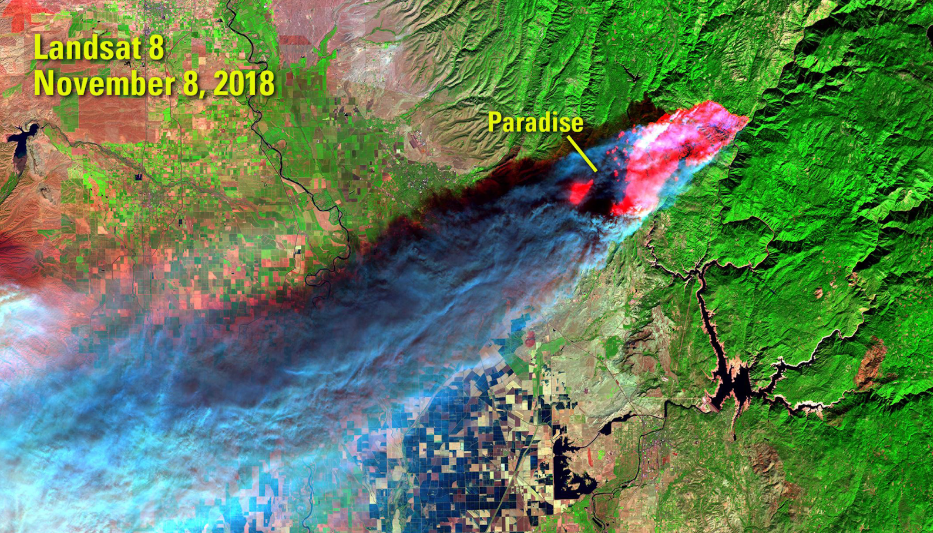
Photo: NASA; Camp Fire, Northern California (Oct. 7, 2018- Nov. 8, 2018)
Furthermore, the dry, arid environment is amplified by the decrease in water availability due to the drought, especially in the Southwest. In the Fourth National Climate Assessment, the GCRP reported that the “drought in the Colorado River basin reduced Lake Mead by over half since 2000, increasing risk of water shortages for cities, farms, and ecosystems”.
Photo: U.S. Department of Energy
Great Plains
The Northern Great Plains, which include Montana, Wyoming, North and South Dakota, and Nebraska, have also experienced flash droughts-- unpredicted droughts--and extreme heat conditions. In 2017, especially, these weather conditions heavily impacted agriculture and ranching operations. The National Integrated Drought Information System (NIDIS) examined the impacts of the historic 2017 drought and reported that “By July 2017, North Dakota, South Dakota, eastern Montana, and the Canadian prairies were experiencing severe to extreme drought, resulting in fires that burned 4.8 million acres across both countries and U.S. agricultural losses in excess of $2.6 billion dollars.”
Photo: NIDIS
Likewise, the Southern Great Plains, which include Texas, Oklahoma, and Kansas, face difficulties with water shortage and increased temperatures, decreasing agriculture productivity. The GCRP stated, “Extreme heat poses a significant risk to human health and labor productivity in the agricultural, construction, and other outdoor sectors”. Moreover, Hurricane Harvey in 2017 was a costly natural disaster that heavily affected Texas’ coastline. Because of unprecedented amounts of rainfall, Hurricane Harvey led to “widespread flooding and knocked out power to 300,000 customers in Texas in 2017, with cascading effects on critical infrastructure facilities such as hospitals, water and wastewater treatment plants, and refineries”. These extreme changes in weather exemplify how climate change not only damages infrastructure and local economies, but also threatens the public’s health and well being.
Midwest
The Midwest is home to the Great Lakes and major river systems like the Ohio, Upper Mississippi, and Missouri Rivers. Average temperatures there have increased over the past decades and major heat waves are projected to occur more frequently, according to the U.S. Environmental Protection Agency (EPA). This will result in heat stress from rising temperatures and humidity and “more heat-related deaths and illnesses”. Air quality is likewise projected to worsen with an “increased exposure to allergens caused by the lengthening of the pollen season”.
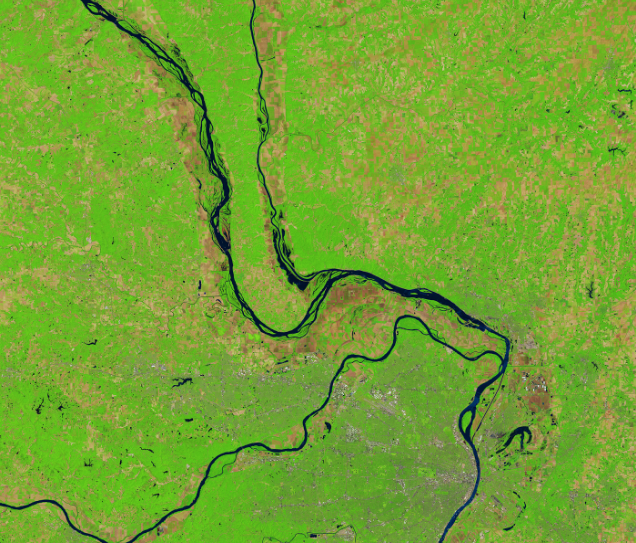
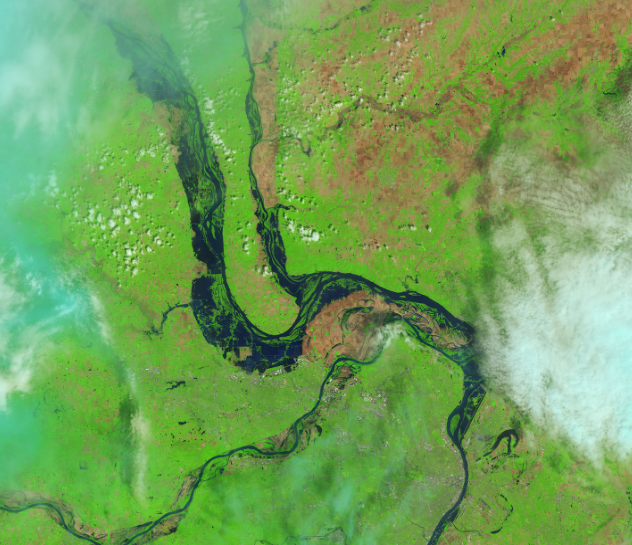
Photo: NASA; Mississippi and Illinois Rivers Flood (June 5, 2018 - May 7, 2019)
Because heavy precipitation is already common, this region is expected to have intensified rainstorms. The EPA reported that “annual precipitation has already risen by as much as 20% in some areas”. With heavier rain, this is leading to more soil erosion and nutrient loss, affecting agriculture and ecosystems. In response to these changes in weather, farmers are now looking into ways to reduce soil and nutrient loss while increasing biodiversity. Iowa State’s program STRIP, which stands for Science-based Trials of Rowcrops Integrated with Prairie Strips, is working with institutions, researchers, and farmers on “the use of prairie strips as a farmland conservation practice”.
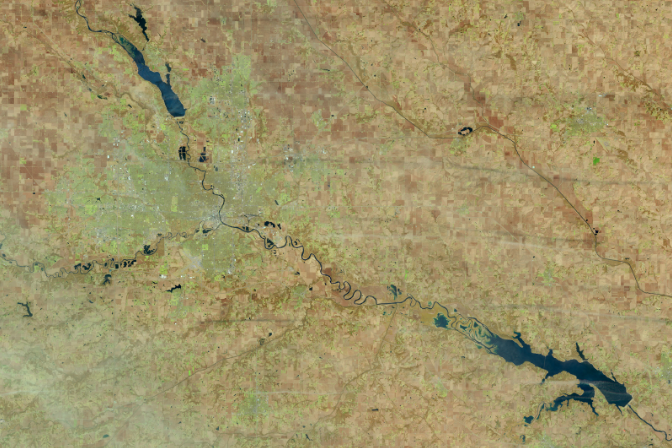
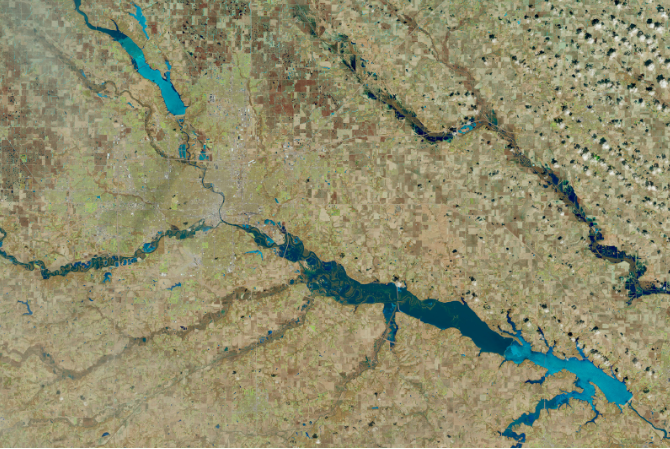
Photo: NASA; Flooding in Iowa (March 15, 2018 - March 17, 2019)
East Coast
On the east coast, temperatures and sea levels are rising. As a result of “warmer-than-average ocean surface temperatures in the Atlantic”, reported by National Oceanic and Atmospheric Administration (NOAA), there is more moisture in eastern U.S. snowstorms and intensifies them. In early December 2019, a winter storm hit the Northeastern states, including New York and New Jersey, 3 weeks earlier than expected. Flights and classes were cancelled due to the amount of snow that reached over 20 inches in some states, and New York governor Andrew Cuomo declared a state of emergency for multiple New York counties.
Because of these changing weather conditions, water, energy, and transportation infrastructure is affected by snow storms, heat waves, and flooding. Moreover, flooding is becoming a problem due to increased rainfall. In the Southeast, which includes Louisiana, North and South Carolina, Florida, and other states, hurricanes have become stronger and more frequent, damaging personal property and critical infrastructure. The EPA also stated that warmer waters spread disease-causing organisms that may affect the inland and coastal waters which may cause the frequency of these outbreaks to increase.
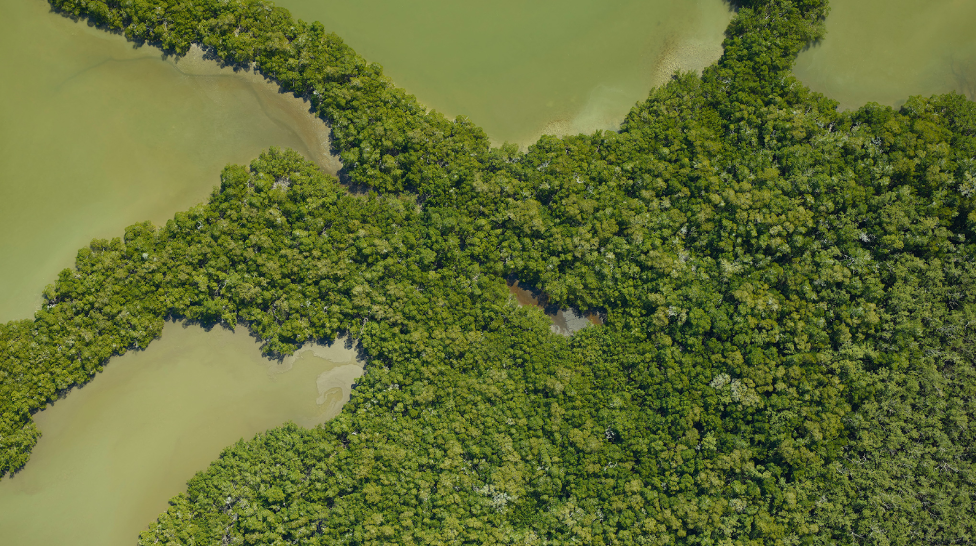
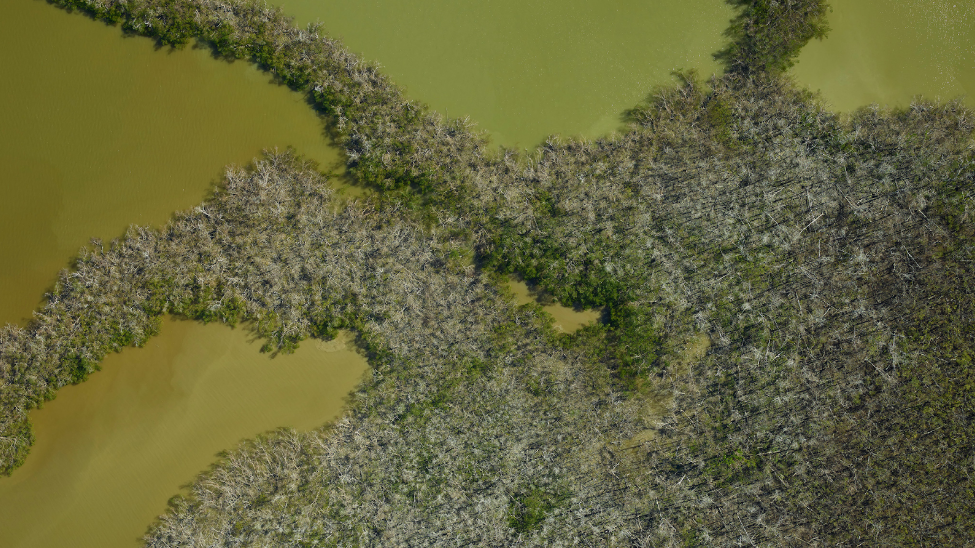
Photo: NASA; Hurricane damage to Florida’s Everglades (March 28, 2017 - Dec. 1, 2017)
Why is this important?
While the climate-related impacts of Alaska, Hawai’i, and the U.S. Caribbean and Pacific Islands were not mentioned, these states are also experiencing environmental changes such as rising sea levels, coral bleaching, and hurricanes. Climate change affects our lives, such that it compromises people’s health and well being, economic security, private property, and jobs. The aforementioned conditions occurring across the nation may not harm everyone equally, as low-income communities are more vulnerable to the impacts of climate change. In order to protect the public’s well being, many individuals, organizations, institutions, and local governments are taking action to mitigate climate change and to prevent the worst from happening.
Get a quick overview of climate change, what UCSD is doing to address climate change, and how you can help at: tinyurl.com/ucsdcarbonfree.
Learn more about climate solutions with the Bending the Curve Report and website.
